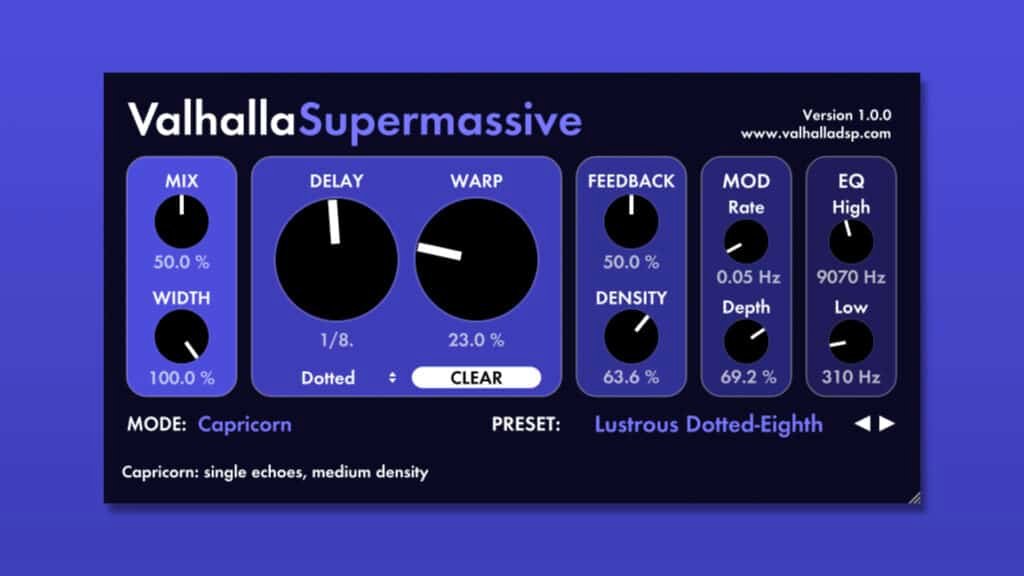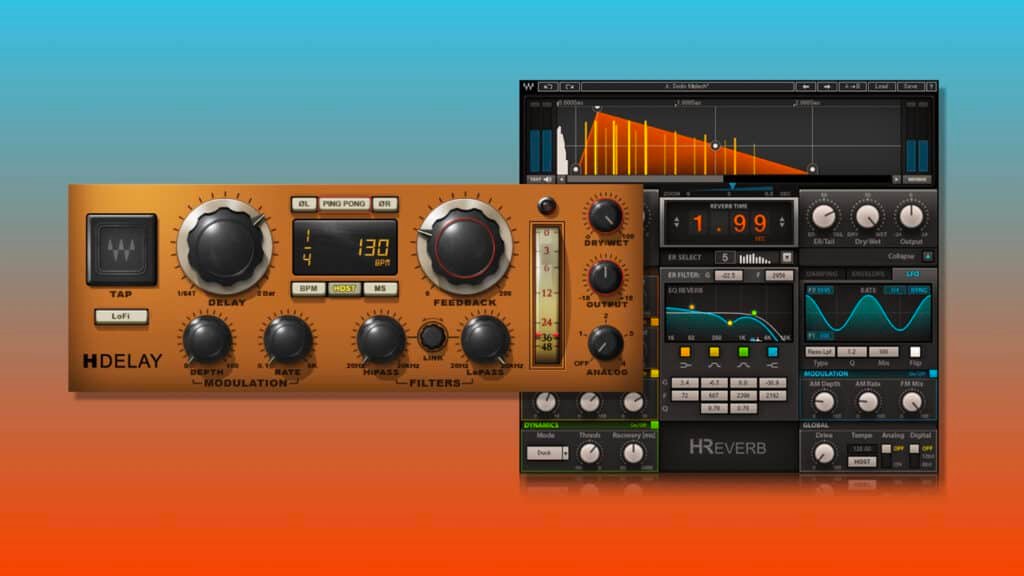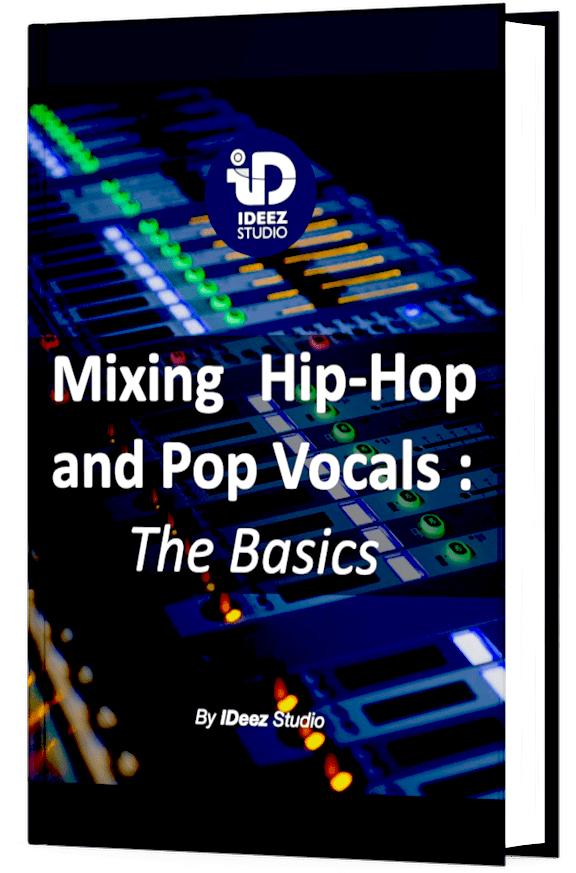Music mixing belongs to the world of art. And art means creativity. At some point in your evolution in vocal mixing, you might be looking for new techniques to enhance the creativity of your vocal mixes. In this article, I’m going to give you 6 ways, that I use every day for my clients, to be more creative in vocal mixing.

Nowadays, there are countless tools that push our creativity in music mixing. Plugins, filters, and other effects of all kinds help us bring our ideas to life faster than ever. Among all these techniques, here are 6 that can boost creativity in vocal mixing :
- Vocal Synthesizer
- Automate and Blend Effects
- Pitch Shifter
- Filters
- Play with the instrumental
- Get inspired
All of these ways to be more creative are just avenues to explore. But in music mixing, creativity is limitless.
Need a professional sound engineer specializing in pop and hip-hop mixing ? Great! Just take a look at our services and let’s blow up your career together! Let’s start now!
Before Starting…
Vocal mixing, in the field of music, is far from easy to master. It requires a lot of precision and attention to detail. This is why it is a “subfield” of mixing that takes a lot of time to learn and master.
Self-Assessment
If you are currently at the beginning of the learning process, I advise you to evaluate the limits of your creativity by yourself. Because, yes, sometimes too much creativity can kill creativity, especially when you haven’t mastered the basic tools of vocal mixing yet.
Let’s be clear, all the techniques I give in this article are for everyone, amateurs or experts. But the amateur will have to keep focusing on the basics. While the expert will be able to explore all his creativity without worrying too much about the basics.
So try, at each point of this article, to evaluate your ability to use creativity tools like the ones that will be exposed here. Be humble and modest and re-evaluate yourself every day. This is the secret of a good evolution in the field of music mixing.
Be Creative, but…
The beauty of the techniques presented in this article is that they are designed to create surprise, amazement and life. But music mixing is like cooking, each ingredient must be dosed correctly.
That’s why all the techniques that will be given to you below are not to be introduced in every vocal mix, but only when the situation is favourable.
Sometimes you may be bubbling with ideas to push a mix further in its creativity, but some ideas are not always suitable. Always put yourself in the shoes of a listener who is new to the mix. Doing this helps to set boundaries.
If you’re ready, let’s go!
1. Vocal Synthesizer
Using a vocal synth is the way to send the vocals of a song into another universe.
Without going into too much detail, the principle of a vocal synthesizer is to create harmonies and chords based on the voice and the key of the song. Depending on the plugin or tool you use, you will be able to modify the timbre, tone, color, pitch, filtering and chords as you wish.
This kind of tool can be triggered either by voice only. The plugin will then create the chord(s) itself according to the key. Or by an external MIDI signal which will determine which notes the vocal synth should target.
This kind of effect usually works very well on quieter moments of a song or on a bridge, for example. It often accentuates the airy and atmospheric aspect very strongly.
Among all the vocal synthesizer plugins available on the market, one of them clearly takes the lead…
iZotope VocalSynth 2

This plugin from iZotope has everything you need to create a premium-quality vocal synthesizer.
The plugin first allows you to choose the type of sound synthesis you want to highlight. Or even mix them! For each mode, it is possible to modify the timbre, the color and the rendering of the vocal synth.
A high quality interface will allow you to modify or adjust, in the middle of the plugin, the mix between each type of synthesis. It doesn’t get any easier than this!
At the bottom of the plugin you will also find all the effects and filters necessary for a good sound. If you work in the world of pop or electro, this is clearly a must!
The great plugins manufacturer Waves also released, a few years ago, a vocal synthesizer called Ovox. It is also a very good plugin available for the modest sum of 49$. But in terms of sound quality, it is in my opinion below iZotope’s VocalSynth.
If you don’t have a lot of money to spend on vocal mixing, I would advise you to start with Ovox, then move on to VocalSynth 2 if you want to push the quality of your vocal mixes further.
2. Automate and Blend Effects
Being able to master the addition of effects like reverb and delay is one thing, but being able to make them live throughout a song is a whole other art. This is exactly where the creative aspect lies.
Apart from the purely creative aspect, the most complicated task when it comes to adding reverbs and delays is to be able to mix them in the right way. If you want to know more about this, click here!
A. Delay
The most used creative effect automation for years, especially in pop, hip-hop and RnB, is the one that emphasizes the end of phrases or certain syllables to fill in gaps. This type of delay is often called Throw Delay. In order to carry out this kind of automation, it is important to use auxiliaries and send buses. I talk about this in more detail in the article below.
How to Blend Delay And Reverb With Rap Vocals
In this article, I explain you how to blend reverb and delay with rap vocals.
Without an audio example, this principle might seem rather vague, that’s normal! Let’s take an example. In this 1st audio clip, a kind of gap appears between the two sentences. In this place it will be interesting to send only the syllables that will fill these gaps. Have a listen!
The gap is quite disturbing. That’s why a ping-pong delay has been added on the end of the syllable “gone” to, first, give more dimension to the mix and, second, to fill those unpleasant gaps between the sentences. The “whole” is now much more satisfying to listen to, it’s living.
What has been done in this part of the mix is simple. As the ping-ping delay on the 1/4 note was in auxiliary. All that was needed was to send the syllable “gone” in a more powerful way, and it was done.
But be careful, this kind of automation must remain subtle. The effects cannot, or only in very rare cases, take over the vocal lead.

When it comes to be creative, my favorite delay plugin is Replika from Native Instruments. But it’s purely subjective, other delay plugins like H-Delay from Waves or EchoBoy from Soundtoys are great as well. There are many others! All you have to do, to build your opinion, is to try the plugins available on the market!
B. Reverb
The same principle can be applied on reverb effects. But this time you can also play with the decay time and/or with the reverb tail.
What I recommend you to have in your mix template is a second reverb with a long tail. You will only draw it when the opportunity to give a more atmospheric mood arises.
In this audio clip, a kind of power surge is clearly perceptible, especially with the instrumental cut. But the very end of the sentence lacks space and width.
What was done to make this verse end “bigger” is simple : Send the “what if” louder into the long tail reverb and take advantage of the power of that beautiful space that is created around the voice just before entering the chorus.
Sometimes, simple things change everything! But which tool to use for this kind of application ?

Well… every field has its #1. In the case of creative reverbs, Valhalla holds the crown. The way you can tweak the parameters and make the effects travel between delay and reverb is impressive. And the sound quality that comes out of it is particularly good.
But to be honest, I’m also a big fan of Native Instruments’ Raum, released a few years ago. The purity and lightness of this reverb is impressive.
C. Blended Reverb and Delay
Let’s push creativity further…
Now that we have effects correctly setup and automated to make the song live, why not send these effects auxiliaries into each other? A delay in a reverb… A 1/4 note ping-ping delay in a 1/8 note straight… There’s no limit to what you can do!
The great thing about the bus and aux system is that you can have each source travel all over the session, while keeping total control over each of them. Think about it, this could give a whole new life to your mixes!
3. Pitch Shifter
Aaaah! This is a very interesting point here! But before going any further, let’s define clearly and precisely what a pitch shifter is.
In music, a pitch shifter is a tool, usually in a software form, that modifies the pitch of an audio source. The pitch change can be done in cents, semitones or octaves. Concretely, the pitch shifter will modify the waveform to create a more low pitched (longer wavelength) or high pitched (shorter wavelength) audio source.
It is not to be confused with the filter whose purpose is to modify the timbre of the source, but not the waveform itself. We will talk about it later!
But how can you get anything interesting in vocal mixing with a tool like this ? Keep in mind, before going any further, that the best results are often obtained in parallel. Indeed, combinations between direct and pitched voices are often the most suitable for vocal mixing.
A. Pitch down
Pitch down means that the source will be pulled down to the lower frequencies. To get straight to the point, let’s listen to a short audio clip in which a voice has been mixed with a down-pitched voice.
In fact, it is important to describe what emotion it brings out. With a downward pitch, it’s often something dark, obscure, almost demonic that comes out of this effect.
In the case of this audio clip, you notice that the effect appears very often. But most of the time, and as with all other creative techniques, it has to be placed in more precise and shorter places. For example, to emphasize a very dark sentence of the artist.
B. Pitch Up
While the pitch down brings out something very charismatic in the rapper/singer, the pitch up brings out much more different emotions.
It is often in rap music that the pitch up is used. And in 90% of the cases, it is to accentuate fast and technical phases. Indeed, a “chipmunk” voice associated with a direct voice very often gives a feeling of speed.
But in some cases, the results can be unexpected and surprising. You have to try different things, then make a final decision!
But how do you get that kind of result ? What tools should I use to do this quickly and efficiently ? For the past few years, Little AlterBoy from Soundtoys has taken the lead in the Pitch Shifter category.

This plugin is probably the best in its category for 2 reasons: Its simplicity and its sonic quality.
The two big knobs on the left will modify the pitch and the formant. To make a small parenthesis on the formant, it is a parameter that allows you to modify the timbre up or down without changing the note. The best way to illustrate this parameter is obviously through audio.
“Normal” voice
Low voice
High voice
You can clearly hear that the notes didn’t move. Which is really useful when it comes to stay in harmony with the lead vocal! But let’s get back to the point.
The “mode” part located in the middle of the plugin is used to modify the algorithm used. I let you discover that!
In terms of creativity, the right part is the most interesting. Indeed, thanks to the “drive” knob, you can add a distortion to the signal and make it more aggressive. And with the “mix” knob, you can adjust the balance between the direct signal and the pitched signal.
This plugin allows you to go straight to the point with a great sound quality. A must have in your plugins bank!
4. Filters
Using filters is the easiest way to be more creative in vocal mixing.
The best known and most widely used filter is the so-called “telephone” filter. It consists in cutting the low and high end of the spectrum and keeping only the mid-range. This will give a telephone feeling.
This kind of effect can be effective in intro/outro, on a bridge, on ad libs. The possibilities are numerous.
Whatever the choice of filter, some plugins are more adapted than others. MetaFilter from Waves, for example, is a filter that allows you to go in all artistic directions and will give life and movement to the voices.

Behind this plugin full of controls is a plugin of extreme simplicity and very instinctive. It will adapt to the bpm of the song, color the source if necessary and give character if necessary. For creative purposes, don’t hesitate to take inspiration from the Waves team’s presets which can sometimes take you in unexpected artistic directions.
5. Play with the Instrumental
Always keep in mind that mixing is always done with at least two different sources. Talking about vocal mixing is, in itself, very meaningless. Indeed, in music, the goal is to put each element together.
If we assume, in our case, that the instrumental is already mixed, the goal will be to combine the vocals with the instrumental. Why, then, not play with it to accentuate the harmony between the two elements? I’ll give you some guidelines!
A. Cut

The most common way to play with the instrumental is simply to cut it. Before a chorus, or a verse part with more impact, here again, no limit!
In music mixing in general, silence is a very powerful weapon to keep the listener’s attention until the end of the song. It can even happen that several cuts in a row are just what is needed to give life, as it is the case in the audio clip below.
In fact, the instrumental cut really helps to highlight the voice, which is, in pop music, hip-hop and many other genres, the main instrument of a song, the one that must imperatively cut through the mix.
In this audio clip you can also hear a tape effect that slows down and creates a very short downward pitch effect. This kind of effect is coming back very strongly in the last few years and there are some very simple plugins that can do this.

TapeStop by Kilohearts, for example, is the kind of plugin that professional sound engineers love. Because this plugin has to do only one thing, simulate a tape that stops… and starts again! And, honestly, it does it wonderfully!
B. Chorus, Flanger, Phaser,…
These kinds of effects are often a bit scary for novice sound engineers or artists looking for better quality demos. However, when used properly, these effects can create dimensions that no other tool can produce.
Sure, using choruses, phasers or flangers on an entire instrumental can be risky, but it can also create movement effects that are in total harmony with the singer/rapper and his lyrics.
A flanger, for example, evokes dizziness, but it can also, to a lesser extent, evoke travel. In the end, it’s up to you to determine what it will evoke!
Let your imagination run wild!
C. Low-Pass Filter
Adding a low-pass filter on pre-frames, bridges or certain verse parts is probably the most efficient and easy way to play with an instrumental. Initiated in the mid 2000’s by Drake’s producer, 40, this production/mixing technique has never lost its cool, regardless of the genre. Although, let’s be honest, it is often used in hip-hop.
The principle is simple, drop a low-pass filter down to 150-200 Hz, and let only the bottom end of the instrumental spectrum play. This will create an “underwater” effect that is usually very appreciated by the listeners and that will undoubtedly highlight the voice and its universe.
To hear the beauty of this musical mixing principle, I suggest you to listen to the album “Nothing Was The Same” by Drake. You will hear in almost every track this filtering technique.
6. Get inspired
To be creative, you have to be inspired. To be inspired, you need music.
Too often, sound engineers and producers forget this aspect of our jobs, which require an open mind about what’s going on in the music industry these days.
When it comes to vocal mixing, this principle applies more than ever, as today’s tools and technology allow for more artistic directions. In 2022, there is less and less code in the field of vocal mixing.
The public is more and more open to originality. The proof with artists like Billie Eilish. So it’s up to us, sound engineers, artists, producers and musicians, to combine our inspiration with our musical culture and knowledge.
If you already have an advanced level of music mixing, don’t hesitate to take inspiration from your competitors. There is nothing wrong with that!
In short, whenever you listen to music, try to pay attention to the details of the mix, regardless of the genre. You might be surprised at some of the subtleties of songs you’ve been listening to for years!
Conclusion
Being creative seems to be easy at first glance, but it takes effort and work. You have to try and try again, analyze, listen, and learn which techniques work and which don’t. It is important to always keep in mind that vocal mixing, or music mixing in general, is in the realm of art, which is limitless.
But limitless in creativity does not mean limitless in your mixes. All these techniques are to be used sparingly. When a technique works well in one mix, try using another in the next. The goal is really to vary so that, in the long run, you have as wide a choice of creative mixing techniques as possible.
If you also have some vocal mixing techniques to share with me, don’t hesitate to put them in the comments. If you have any questions about this topic or about music mixing in general, please contact me, I’m always happy to help.







